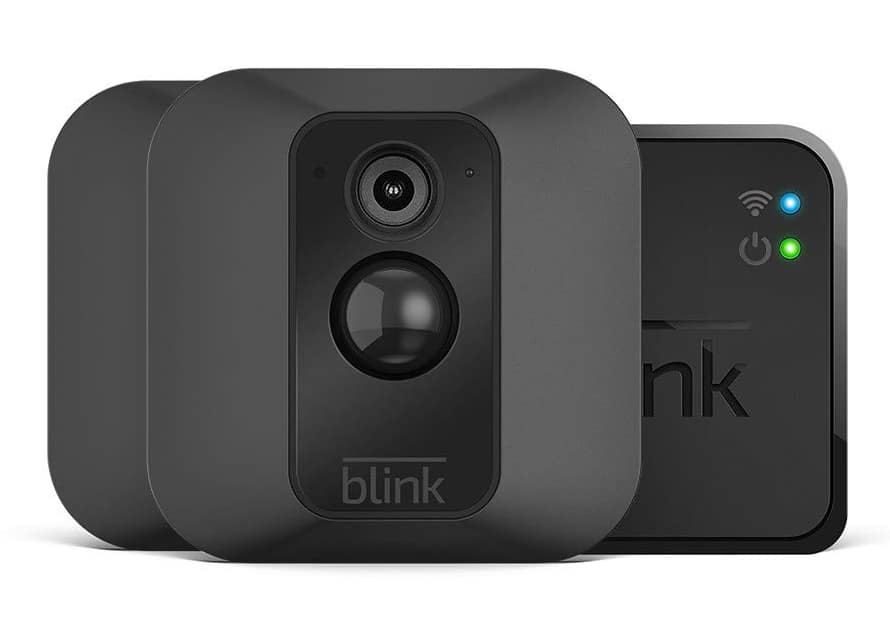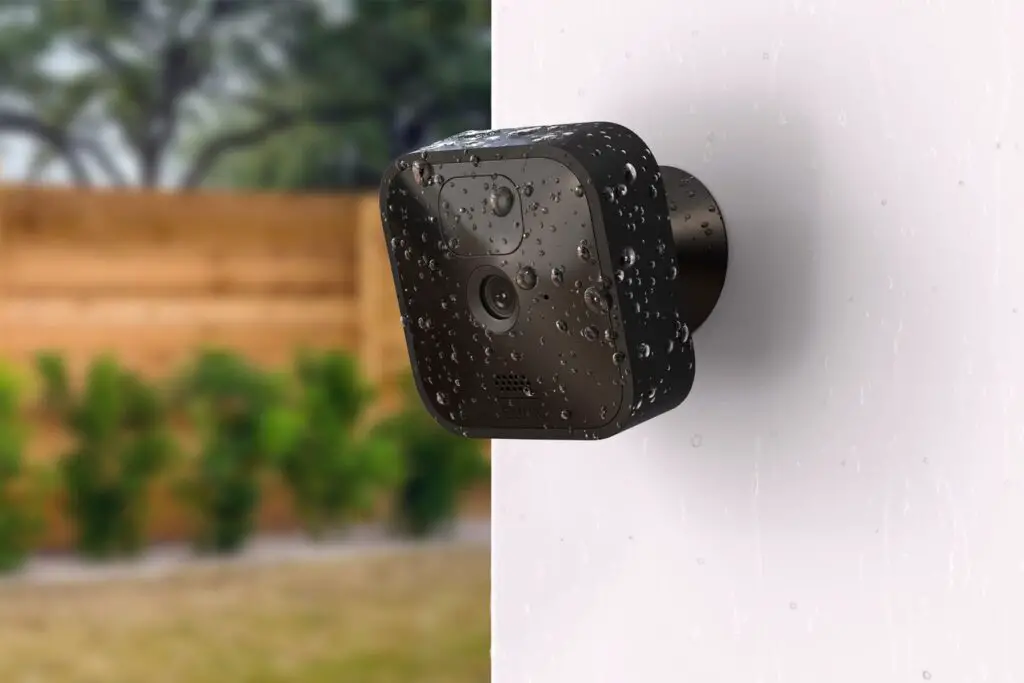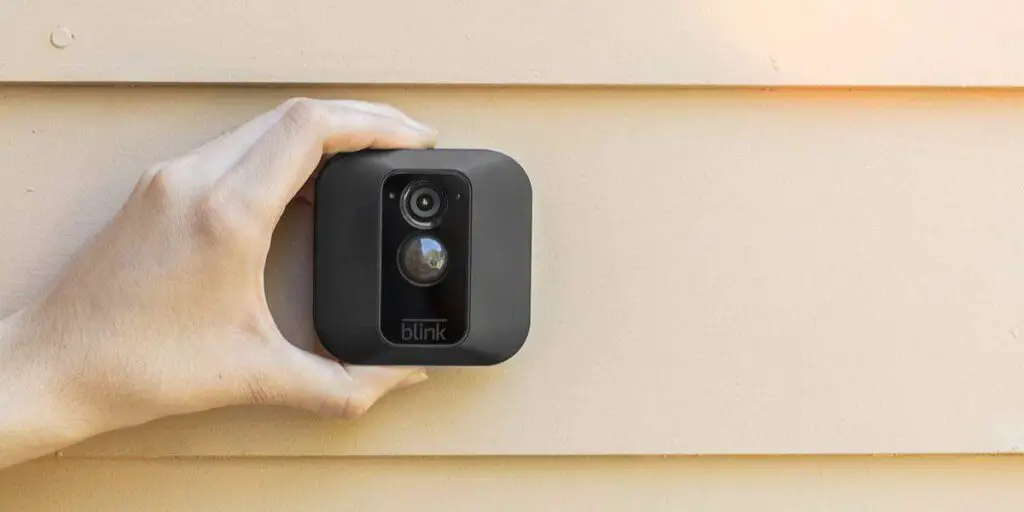Introduction
Blink cameras have gained immense popularity for their ease of use, affordability, and reliable home security features. These wireless cameras allow you to monitor your property remotely, providing peace of mind and an added layer of protection. However, there may come a time when you need to change the WiFi network your Blink camera is connected to.
Whether you’ve moved to a new home, upgraded your internet service, or simply need to reconfigure your camera, understanding the process of changing WiFi on your Blink camera is essential. While the specific steps may vary slightly depending on the Blink camera model you own, the overall procedure remains consistent.
Explain the prerequisites for changing the WiFi on your Blink camera, including ensuring you have a stable internet connection and access to the Blink mobile app. We will then guide you through the necessary steps, including putting your camera into setup mode, accessing the Blink mobile app, and initiating the WiFi network change process. We will also provide troubleshooting tips and common issues you may encounter during the process.

How do I reset my blink mini camera to a new Wi-Fi?
The Blink Mini has a reset button on the bottom side of the camera. This reset button can be used when you add your Mini to a new or existing Blink system or when you move your Mini to a new location or Wi-Fi network. A red light on the Mini indicates that the camera is not connected to the internet.
To reset your Blink Mini camera to a new Wi-Fi network, follow these steps:
Locate the reset button
On the back of your Blink Mini camera, you’ll find a small reset button. It is usually recessed and may require a paperclip or similar object to press.
Press and hold the reset button
Insert the paperclip into the reset button and press it down. Hold the button for about 10-15 seconds until you see the LED light on the camera start flashing blue. This indicates that the camera is in setup mode.
Open the Blink app
Launch the Blink mobile app on your smartphone or tablet. Ensure that you have a stable internet connection.
Add a device
Tap on the “Add a Device” option in the app and follow the on-screen instructions. Select the Blink Mini camera from the list of available devices.
Connect to new Wi-Fi
The app will guide you through the process of connecting your Blink Mini camera to a new Wi-Fi network. Enter the network credentials (SSID and password) for your new Wi-Fi network when prompted.
Complete the setup
Once you have entered the correct Wi-Fi details, the app will attempt to establish a connection between your Blink Mini camera and the new network. Follow any additional prompts or instructions provided by the app to complete the setup process.
Can Blink camera work on different Wi-Fi?
Blink’s original Indoor, XT, and XT2 cameras will only connect to the same Wi-Fi SSID that the Sync Module is connected to.
One of the most common reasons for Blink cameras not connecting to Wi-Fi is the weak signal strength. Other possible causes include the following: Wrong Wi-Fi password was entered during the camera’s activation process. Using outdated Blink app.
Yes, Blink cameras can work on different Wi-Fi networks. One of the key advantages of Blink cameras is their flexibility in terms of connectivity options. Whether you move to a new home, change your internet service provider, or simply want to use your Blink camera in a different location, you can easily connect it to a different Wi-Fi network.
To connect your Blink camera to a different Wi-Fi network, you will need to follow a few simple steps. First, ensure that the Blink camera is in setup mode. This usually involves pressing a button on the camera or using the Blink mobile app to initiate the setup process. Once in setup mode, you can use the Blink app to connect the camera to the new Wi-Fi network. The app will guide you through the necessary steps, including selecting the new Wi-Fi network, entering the network credentials (SSID and password), and establishing the connection.
When you switch the Wi-Fi network for your Blink camera, it will need to be within range of the new network’s coverage area. Additionally, the new Wi-Fi network should have a stable internet connection to ensure proper camera functionality and remote access.
Do Blink cameras connect to Wi-Fi or module?
Blink devices need an always-on 2.4 GHz Wi-Fi internet connection with at least 2 MB per second of upload speed (from your network to the internet). The Sync Module 2 has an active USB-A port to store up to 256 GB of motion clips on your own compatible USB drive. Click to learn more about Local Storage.
Blink cameras connect directly to Wi-Fi networks without the need for additional modules or hubs. This is one of the key features that make Blink cameras user-friendly and easy to set up. By connecting directly to Wi-Fi, Blink cameras eliminate the need for complex wiring or additional devices, simplifying the installation process.
When setting up a Blink camera, you will use the Blink mobile app to connect it to your Wi-Fi network. The camera communicates directly with the Wi-Fi router, enabling it to transmit video footage and receive commands from the app. This direct connection allows for real-time monitoring and remote access to the camera’s live feed and recorded videos.
By connecting to Wi-Fi, Blink cameras leverage the existing wireless infrastructure in your home or office, providing a convenient and efficient way to monitor your property. They can connect to standard 2.4 GHz Wi-Fi networks commonly used in households and most commercial environments. Stable internet connection and adequate Wi-Fi signal strength are crucial for optimal performance of Blink cameras. If the Wi-Fi signal is weak or intermittent, it may impact the camera’s ability to transmit video reliably.
How far can Blink cameras be from Wi-Fi?
100 ft.
In a typical situation (single building, no unusually dense construction materials), the Sync Module should be able to communicate with Blink cameras up to 100 ft. (30m) away in any direction. We recommend keeping the Sync Module near your wireless router for best signal strength.
The maximum distance between a Blink camera and a Wi-Fi router depends on the Wi-Fi signal quality, barriers, and Blink camera model. Blink cameras typically work within a Wi-Fi range of 100 to 300 feet (30 to 90 meters) in an open, unobstructed setting.
However, walls, floors, and other physical impediments can restrict Wi-Fi signal range. The maximum distance between the Blink camera and the Wi-Fi router also depends on signal quality and strength.
A strong Wi-Fi signal is essential for Blink camera installation for best performance and connectivity. Signal strength may decrease if the camera is too far from the Wi-Fi router or there are barriers between, causing connection troubles or video quality degradation.
If you find that the Blink camera is experiencing connectivity problems due to distance or weak signal, you can try the following solutions:
- Move the camera closer to the Wi-Fi router to improve the signal strength.
- Use Wi-Fi range extenders or mesh network systems to expand the coverage area and strengthen the signal.
- Ensure that there are no large obstructions or interference sources (such as other electronic devices) between the camera and the Wi-Fi router.
Why does Blink camera have its own Wi-Fi?
The Sync Module manages communications between your Blink devices and our secure servers; therefore your camera needs to connect to its local Wi-Fi. The Blink Mini, Video Doorbell, and Wired Floodlight do not require Sync Modules for those communications, which is why they broadcast their own local Wi-Fi connections.
A separate Wi-Fi network is not available for Blink cameras. They use your home or office’s Wi-Fi network. Wireless Blink cameras connect directly to the Wi-Fi network to transmit video and receive commands from the Blink smartphone app or other compatible devices.
The Blink camera may generate a “Blink-xxxx” Wi-Fi network during setup. The camera and Blink smartphone app connect over this network. The camera will no longer need its own Wi-Fi network once connected to yours.
You need the temporary Blink Wi-Fi network to configure the camera and enter your home or business Wi-Fi network credentials. After connecting to your Wi-Fi network, the Blink camera will interact directly with the router.
Why is my Blink camera not connecting to my internet?
Make sure the sync module is properly connected and turned on. If possible, try to keep the gap between the sync module and your WiFi Router as little as possible for the best results. Furthermore, make sure the sync module stays near the proximity of the Blink camera to seamlessly connect with the device.
If your Blink camera is not connecting to your internet, there could be several reasons for this issue. Here are some common troubleshooting steps to help identify and resolve the problem:
Check Wi-Fi signal strength
Ensure that the camera is within range of your Wi-Fi router and has a strong and stable Wi-Fi signal. If the signal is weak or intermittent, consider moving the camera closer to the router or using Wi-Fi range extenders to improve coverage.
Verify network credentials
Double-check that you have entered the correct SSID (Wi-Fi network name) and password for your internet connection. Mistyped or incorrect credentials can prevent the camera from connecting.
Restart camera and router
Power cycle both your Blink camera and Wi-Fi router. Turn them off, wait for a few seconds, and then turn them back on. This can resolve temporary connectivity issues.
Disable MAC filtering or firewall settings
If you have MAC filtering or firewall settings enabled on your router, make sure that the Blink camera’s MAC address is allowed or exempted from any restrictions.
Reset camera and reconfigure
If other troubleshooting steps fail, you can try resetting the Blink camera to factory settings and setting it up again from scratch. Follow the manufacturer’s instructions to perform a camera reset and then go through the setup process again.
Contact Blink support
If the issue persists, reach out to Blink’s customer support for further assistance. They can provide specific guidance and troubleshooting steps tailored to your camera model and situation.

Can I connect my Blink camera to a public Wi-Fi network?
Yes, it is possible to connect your Blink camera to a public Wi-Fi network, but there are some considerations to keep in mind. Public Wi-Fi networks, such as those found in coffee shops, libraries, or hotels, typically have certain limitations and security measures in place that may affect the functionality of your Blink camera.
Here are a few things to consider when connecting your Blink camera to a public Wi-Fi network:
Authentication and captive portals
Public Wi-Fi networks often require users to accept terms and conditions or enter credentials through captive portals before accessing the internet. Since Blink cameras do not have a built-in web browser or interface to interact with these portals, they may not be able to connect to the network without manual intervention.
Network bandwidth and restrictions
Public Wi-Fi networks can be heavily utilized, resulting in limited bandwidth. This can impact the camera’s ability to transmit video and receive commands effectively. Additionally, some public networks may have restrictions on certain types of traffic, such as video streaming, which could affect the camera’s performance.
Security and privacy
Public Wi-Fi networks are inherently less secure compared to private networks. It’s important to consider the security risks associated with transmitting video footage over a public network. To ensure the privacy of your footage, it is recommended to use end-to-end encryption and enable additional security features provided by the Blink camera and app.
Why would I need to change the Wi-Fi network on my Blink camera?
There are several reasons why you might need to change the Wi-Fi network on your Blink camera. Some common scenarios include moving the camera to a new location with a different Wi-Fi network, upgrading your home network, or experiencing connectivity issues with the current network.
There are several reasons why you might need to change the Wi-Fi network on your Blink camera:
Moving to a new location
If you relocate to a new home or office, you will likely have a different Wi-Fi network. Changing the Wi-Fi network on your Blink camera allows you to ensure it remains connected to the new network and continues to provide surveillance and security for your new location.
Upgrading your internet service
If you upgrade your internet service or switch to a new internet service provider, you will need to connect your Blink camera to the new Wi-Fi network to maintain its functionality. This ensures that you can continue monitoring your property and accessing the camera’s live feed and recorded videos.
Network troubleshooting
If you encounter connectivity issues with your current Wi-Fi network, changing the network on your Blink camera can help troubleshoot and resolve the problem. It allows you to rule out any network-related issues and ensure that the camera is properly connected to a stable and reliable network.
Improving network coverage
In some cases, you might need to change the Wi-Fi network on your Blink camera to improve network coverage. If you experience weak Wi-Fi signals or dead zones in certain areas of your property, setting up a new Wi-Fi network with better coverage can ensure optimal performance and connectivity for your Blink camera.

Conclusion
Changing the WiFi network on your Blink camera setup is a straightforward process that can be accomplished with a few simple steps. By following the guidelines outlined in this guide, you can ensure a smooth transition to a new WiFi network while maintaining the functionality and security of your Blink camera. The importance of having a stable internet connection and access to the Blink mobile app before initiating the WiFi change process. These prerequisites ensure that you have the necessary tools to successfully complete the task.
We emphasized the significance of putting your camera into setup mode and accessing the Blink mobile app as crucial steps in the process. By successfully changing the WiFi network on your Blink camera, you can continue to monitor your property remotely, enhance your home security, and enjoy the peace of mind that Blink cameras provide.
Remember to keep your Blink camera’s firmware up to date and periodically review your WiFi network settings to ensure optimal performance and security. With this knowledge and understanding, you are now equipped to change the WiFi network on your Blink camera whenever the need arises. Enjoy uninterrupted surveillance and confidently protect your home with your Blink camera on your new WiFi network.

